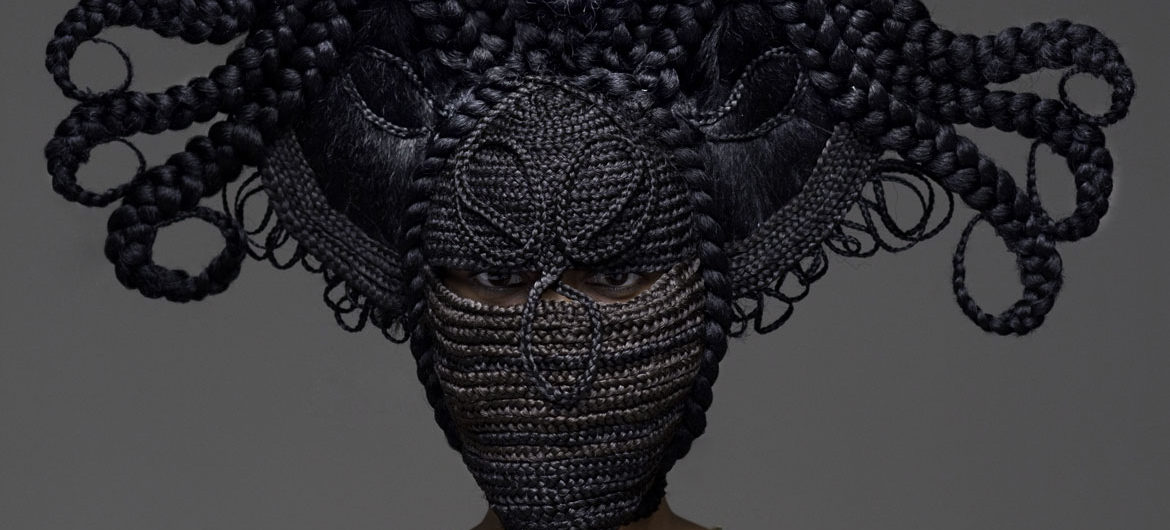After Connecticut painter Barkley Hendricks died in April 2017, there was an outpouring of praise on Instagram. Hendricks made his name in the 1960s and ‘70s by painting realist portraits of African-Americans as icons of Black Power, funk, urban cool. The artists he influenced are myriad, but perhaps chief among them is Kehinde Wiley, who just painted Barack Obama’s presidential portrait.
On Instagram, many black artists commented that seeing Barkley’s work was the first time they felt they saw themselves in a museum.
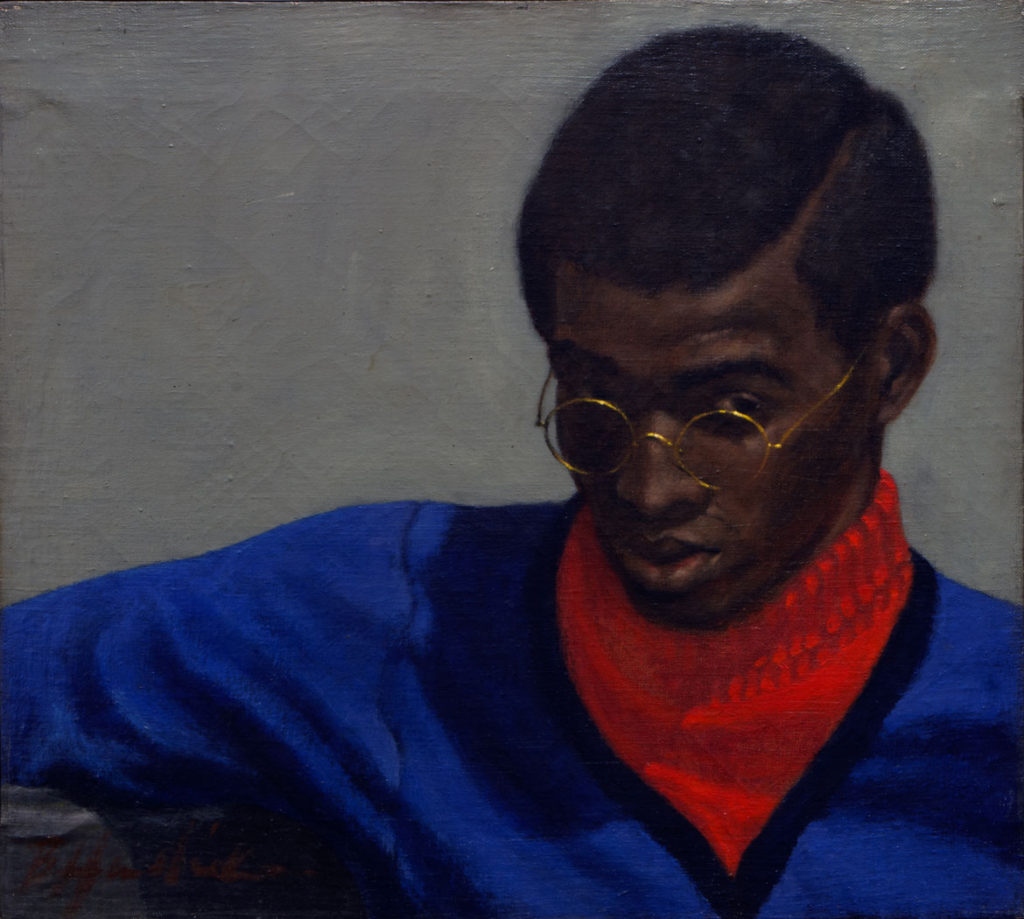
“For days after his death, all I saw was images of Barkely,” says Massachusetts College of Art and Design Curatorial Associate Darci Hanna. “And I was really struck by the profound influence.”
This inspired her to organize the exhibition “Legacy of the Cool: A Tribute to Barkley L. Hendricks” at MassArt through March 3. (The title is an homage to Hendricks’s 2008 retrospective exhibition, which was called “Birth of the Cool.”)
Featuring paintings and photos by Hendricks as well as work by 24 contemporary artists, the exhibition aims to connect some of the dots of these influences, as well as highlight how African-Americans are using their art to address what it means to be black in the United States today.
Artworks range from a painting by Amy Sherald, who painted Michelle Obama’s official First Lady portrait, to Rashid Johnson’s nude photo self-portrait echoing one of Hendrick’s classic paintings to Nona Faustine’s photo of herself, nude, climbing the stairs of New York City’s Tweed Courthouse (“This courthouse was built on an African-American burial ground,” Hanna says).
“I was inspired to paint things that I didn’t see within the art historical narrative,” Sherald has said. “The images [of people who looked like me] weren’t there. I understand the importance of being represented at a cultural level and being able to see reflections of yourself.”
“Representation matters. Still,” Hanna says. “In general in the United States, we are not good at talking about these issues. My greatest hope is this exhibition starts discussions that are powerful and helpful. … These are things we need to be talking about more. Everyone. As a society.”
Help Wonderland keep producing our great coverage of local arts, cultures and activism by contributing to Wonderland on Patreon. And sign up for our free, weekly newsletter so you don’t miss any of our reporting.
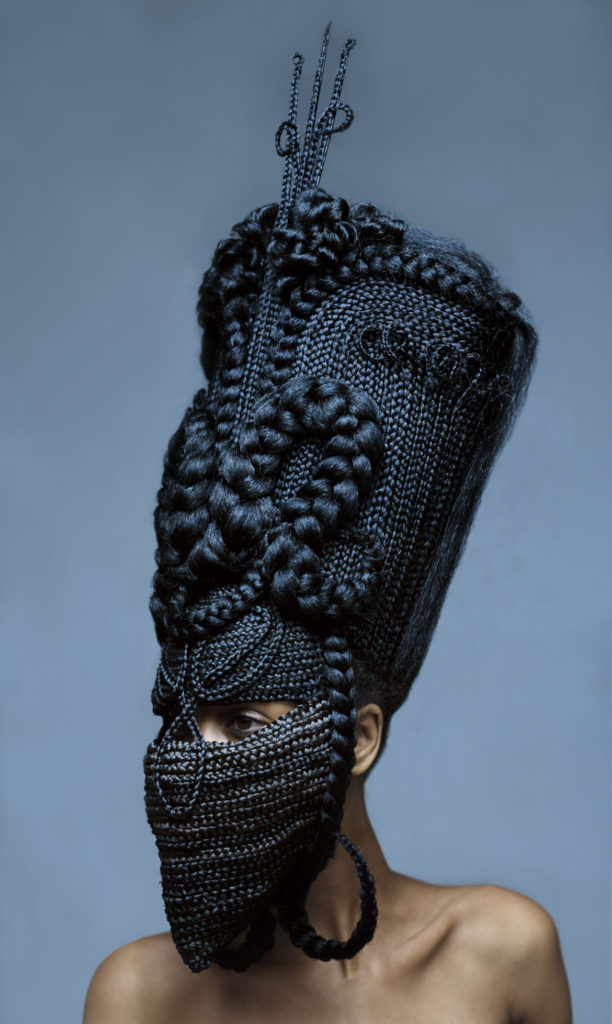
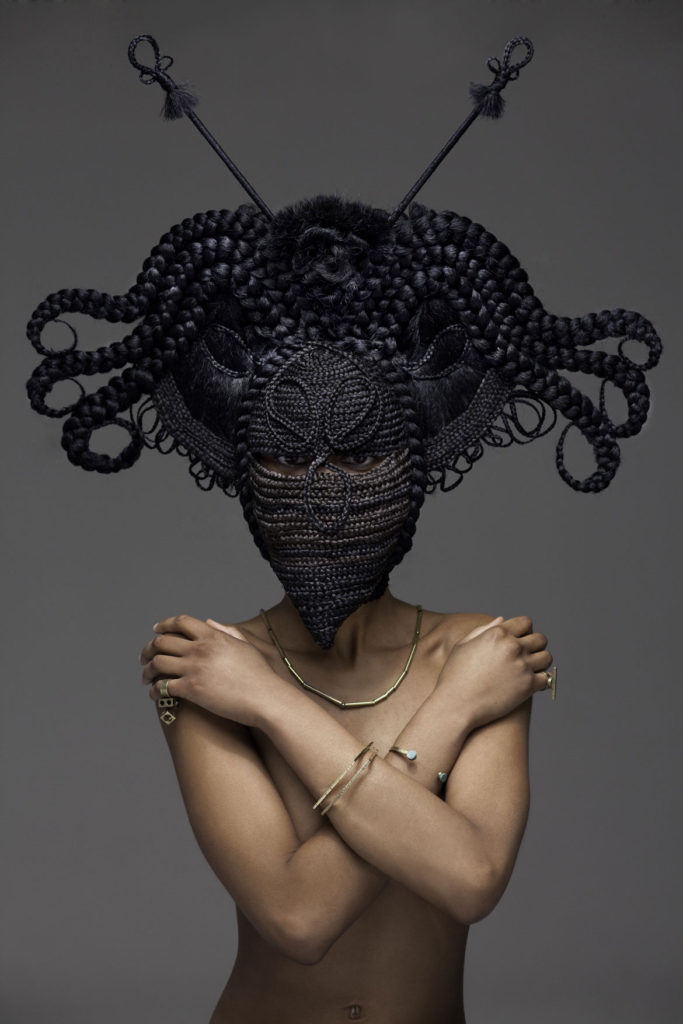
Delphine Diallo, a French-Senagalize artist living in Brooklyn, photographed portraits in collaboration with hairstylist Joanne Petit Frere, who turns real hair into astonishing sculptures.
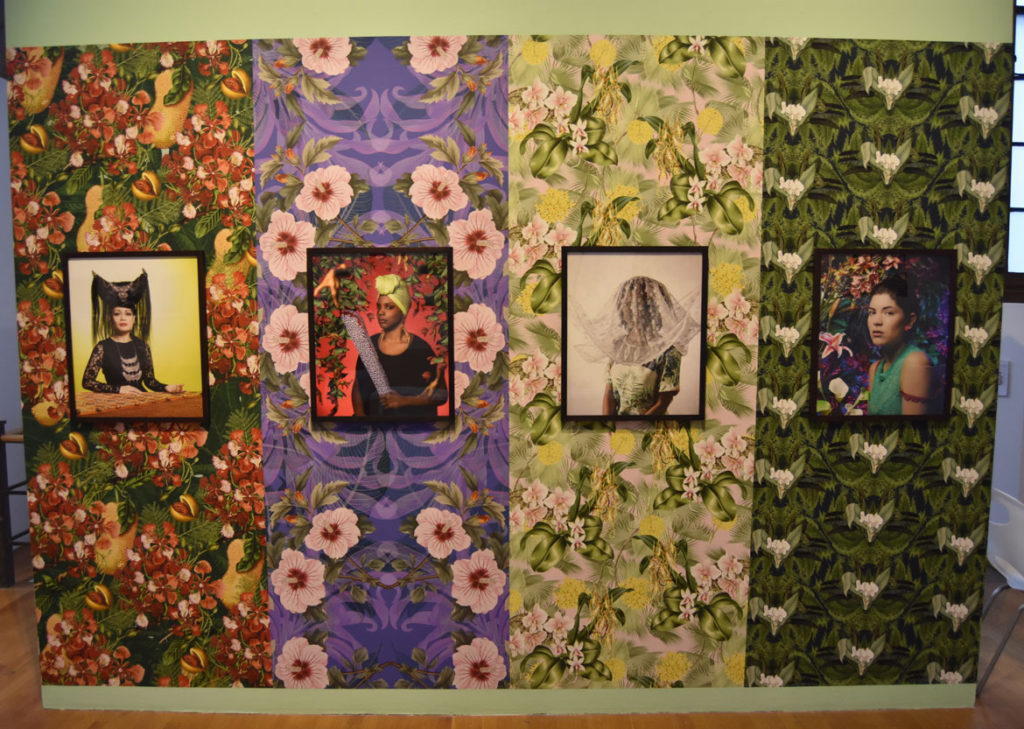
Tiffany Smith, who grew up in the Bahamas, Jamaica and Miami, addresses how identity is constructed in her photos and wallpaper installations. “Playing with stereotypes of how these women perceive themselves and how they’re perceived,” Hanna says. “Then she does a custom wall paper for each woman.”
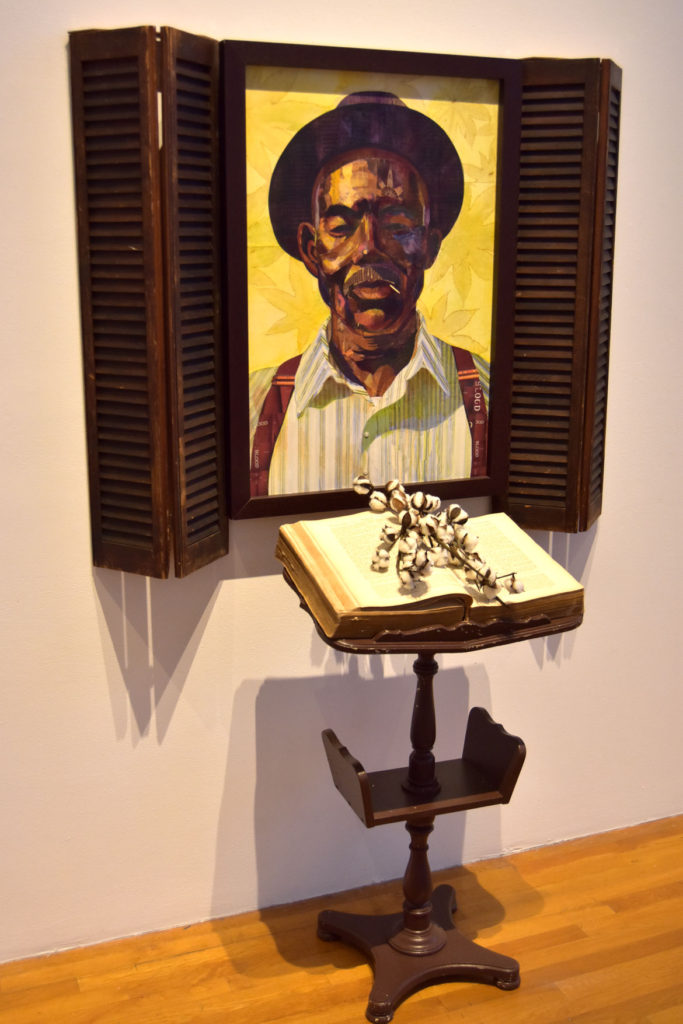
Ekua Holmes of Roxbury, assistant director of MassArt’s Center for Art and Community Partnerships, depicts her grandfather in her 2012 artwork “Southern Idyll—Root of Jesse.”
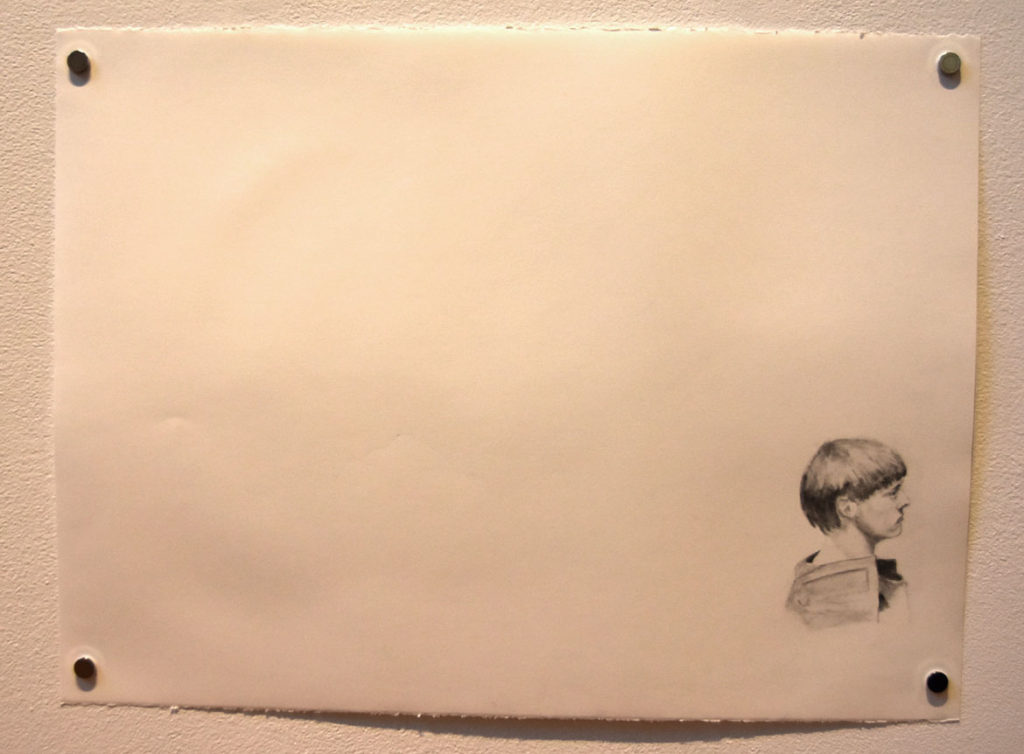
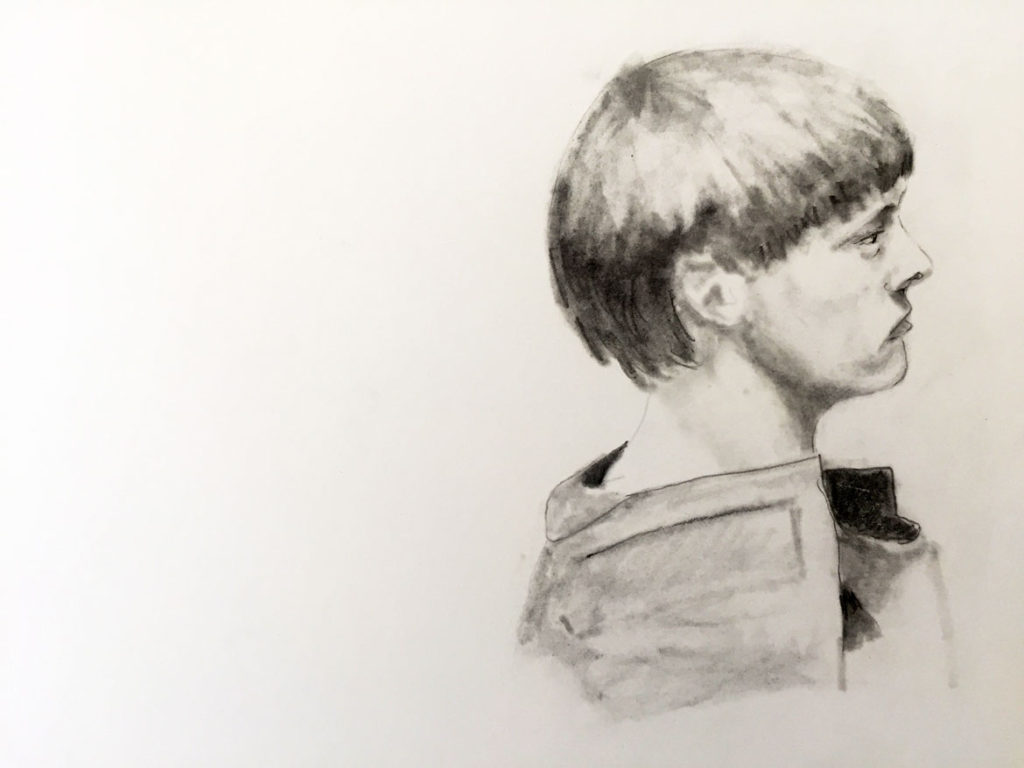
MassArt Professor Steve Locke has “been obsessively drawing people who have been accused of killing unarmed black people,” Hanna says. Including the murderers of James Bird in Texas, police officer Darren Wilson who killed Michael Brown, and Dylann Roof who walked into a South Carolina church with guns and massacred nine people. “Images [Roof] going into the church, images of him leaving the church, images of him that pop up in the media.”
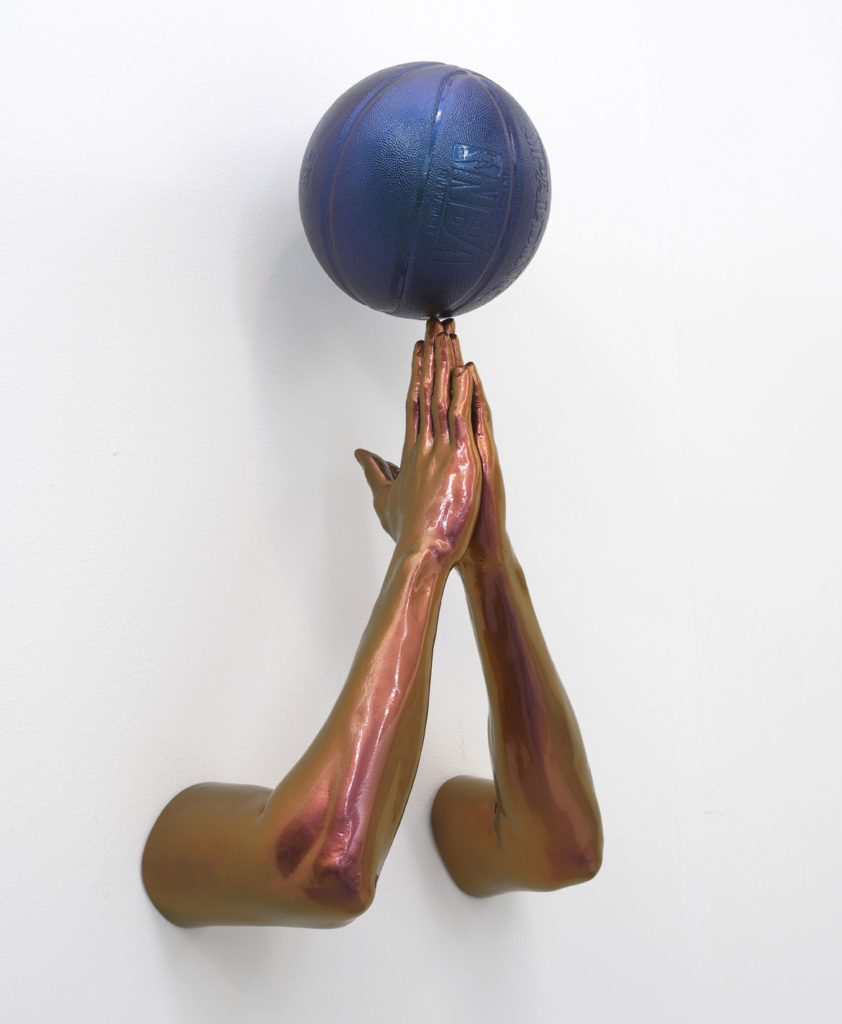
Hank Willis Thomas “thinks a lot about sports in the African-American context,” Hanna says. Is aiming for sports scholarships just chasing false prospects?
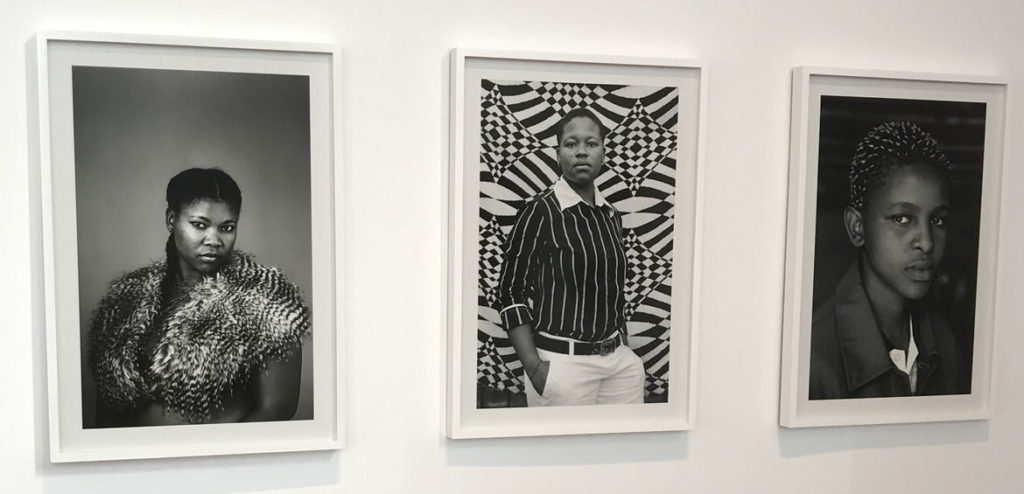
Zanele Muholi has been photographing members of the black LGBTI community of South Africa. “I embarked on a journey of visual activism to insure that there is black queer visibility,” Muholi has said. “Collectively, the portraits are at once a visual statement and an archive: marking, mapping and preserving an often invisible community for posterity.”

Prescribed testosterone patches by his doctor, Boston artist Ari (James Montford) discovered they were manufactured in a “flesh” tone that’s Caucasian, not his African-American brown. “There’s so many assumptions about who has access to medical care, who deserves treatment,” Hanna says. “Racism in the medical system is a well-documented fact.”
Help Wonderland keep producing our great coverage of local arts, cultures and activism by contributing to Wonderland on Patreon. And sign up for our free, weekly newsletter so you don’t miss any of our reporting.
